Failure is a lot like broccoli – it actually is really good for you, but it takes some effort to make it palatable. And sometimes, no matter what you do, it’s just plain yucky.
Most creatives are no strangers to failure – it is, after all, an integral part of the process of innovation, something artists excel at. Whether the big belly flop shows up in the form of materials not working the way we expected, a piece not quite living up to how great it was in our mind or having our work rejected from a show, nothing quite matches the stinging “agony of defeat” when we (unsuccessfully) release our inner visions into the world.
Even the historical greats had to contend with things not going as planned, from Michaelangelo’s dream commission for the tomb of Pope Julius II being interrupted and scaled back to a fraction of his original plan to Brunelleschi losing the contest to Ghiberti for Florence’s massive bronze Baptistery doors. Talk about a very public face plant.

Left: Lorenzo Ghiberti, “Sacrifice of Isaac,” 14-1-1402. Right: Filippo Brunelleschi, “Sacrifice of Isaac,” 1401 – 1402. Ghiberti’s Gates of Paradise Collection, images by the Opera di Santa Maria del Fiore
The brilliant Bernini once completely re-sculpted a marble bust of Cardinal Scipione Borghese, when it was at its final stage of completion, due to a crack in the marble appearing across the face in the first version.
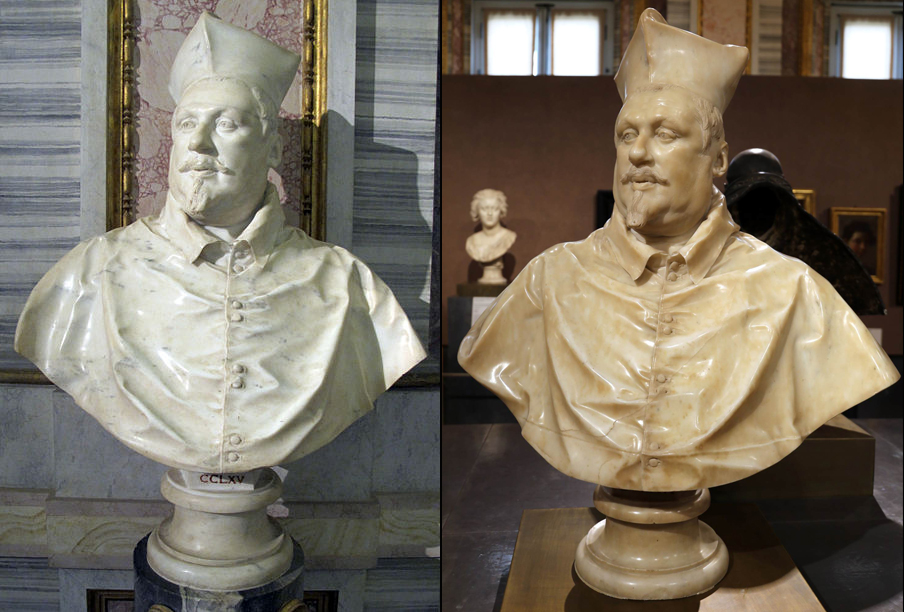
Bernini’s busts of Cardinal Scipione Borghese. The two versions are currently displayed side by side at the Borghese Gallery in Rome. The first version on the left shows the crack across his forehead. As recounted on Wikipedia: “After Bernini had completed the first version, the ‘allustratori’ were polishing the bust when they discovered a significant fracture in the marble across the forehead, disfiguring the face. Bernini was notified and immediately set to work to create a second version with a new block of marble, which took three days according to Domenico Bernini, and fifteen to Baldinucci.” Three days?? Yow.
A Closer Look
To me, it always seems a bit of a double-edged sword. While my inner critic utterly detests failure in every way, it simultaneously insists that if I’m not failing sometimes, I’m not challenging myself to expand beyond my current limits (and, therefore, failing!! Ugh!).
Colin is the first to say that we are most creative when we’re doing what we don’t know how to do. While I do continue pursuing themes in my work for which I’ve already sorted out the technical details (because certain concepts will remain forever compelling to me), when my first reaction to an idea is “it will be a miracle if that works” (and I feel that little tinge of uncertainty and apprehension mixed with the buzz of “what if?”), I know that’s exactly where I need to go. So why, if I’m attempting something new to which my first reaction is “I have absolutely no idea how to do this,” would I be at all surprised if I flail a bit and ultimately fail? Answer: I have absolutely no idea, but I have learned that I have to manage my response to failing if I’m going to continue to grow and develop as an artist.
Four Failures and A Success
Anyone who works with water-based (ceramic) clay sculptures becomes very familiar with its many quirks. Once fired, clay is one of the most durable materials out there. Ceramic sculptures have been found from 28,000 years ago – it’s a safe bet that our sculptures will outlive any of us. But the process of getting a sculpture successfully fired and completed can be fraught with challenges. I have restarted more sculptures than I can remember for any number of reasons – mainly, if it’s not working, I crush it and start over.
1. “If it ain’t whole, you’d better fix it”
I was on a tight deadline to complete “Commodity” for a show. After a successful firing, I was finishing the underside, and she did not survive a three foot tumble onto a concrete floor. I was in total meltdown and Colin said, “I’ll fix her. Don’t worry – she’s going to be fiiiiine.” It was like reconstructing something from an archeological dig using lath, rebar and tons of industrial epoxy, and two days later, he was right – she was back together again. She is so sturdy I don’t think she could be shattered again if you tried. “Commodity” is about child marriage and sex trafficking. She taught me that you can never tell what someone has had to go through to get to where they are. Being so completely broken only to come back stronger seemed to add volumes to her story.
2. “We’ll just take a little off the top..”
Due to events out of our control, we were on a ridiculously short deadline to complete the sculpting portion of the Zemp Legacy Monument. It was all going well when we thought, “should we make his nose just a tiny touch shorter?” (Uh oh…) Rather than re-sculpting his nose and mouth, we cut off the bottom half of his face, took out about 1/4” and re-attached it thinking “that should do it”… and looked at each other in horror. He looked like a seven foot tall gremlin – that tiny adjustment had changed more than just the length of his nose.
Already exhausted by the unforgiving schedule and with no time for mistakes, we’d made a huge blunder. We decided to work on it for a couple hours and… still awful. In despair, we were considering re-sculpting the entire lower half of his face when we decided to take a breath, step back and take a nap. When we came back to the sculpture a bit more rested and thinking more clearly, we did the sensible thing and backtracked, cutting his face off again and making the appropriate adjustments. In the end, we eliminated about 1/8” of length, but that little bit did make a big difference – he ultimately ended up with a more gentle expression and accurate resemblance.
3. “Did you just hear what I heard?”
Anyone who works with ceramics will attest that you will become familiar with repairs, from minor surface cracking to some pretty structural things. One well-respected ceramist recently commiserated, “I hope no one ever has to x-ray my sculptures. There’s so much structural support it could set off the airport metal detector from my house.” Firing incidents are actually quite rare, unlike the ubiquitous stories of things blowing up. We’ve had more things break on the way to the kiln rather than once they’re in the kiln. Things do sometimes happen, especially when firing large sculptures in a gas kiln – a shelf moves or there might be an inclusion in the clay. You hear an ominous, muffled “pop” and try to convince yourself it was nothing, until you hear it again. Then it’s a nail-biter to wait and see what happened. As Colin says, “as long as there are big pieces, we can fix it.” Clay is organic and moves when it’s firing, so these things aren’t unusual or problematic, but they can throw a wrench in a show deadline…
4. Things that go plop in the night: Epic collapses
Sometimes, we have to learn things the hard way…over and over again. Hollow water-based clay sculptures sometimes cannot support their own weight, especially if they get too wet or have no external supports in place.

And this, boys and girls, is why I don’t ever put wet cloth towels directly on my clay sculptures. I’m sorry now that I didn’t take a picture of the sculpture itself, but it was disheartening enough seeing it through the plastic
A Success: Three for One
Mid-January this year I was struggling with failure of a different sort. Colin and I were working on a collaborative sculpture for a show. I often have a pretty clear vision in mind of what I’m doing, but for this one, we just had a general direction. I was working on the figure and something about it just wasn’t connecting in my mind. I grew more and more frustrated until I was in paroxysms of exasperation with the whole project. I wrapped it up in plastic (fortunately, didn’t crush it) and Colin and I jumped headfirst in a new direction. I’d been getting so in my own way on the first one, taking myself way too seriously, and our second concept was the perfect foil for this.
While we were working on this second sculpture, I started a new figure for the first concept we’d had. This one somehow made sense to me and once “Leap Frog” was complete, we launched into “Beyond Her Wildest Dreams.”
Once these two were both complete and off to the show, I opened the first figure I’d been so upset with and thought, “well, she’s not really so bad.” We came up with a new concept direction for her. But even this success story had a mini-failure in the middle. I’d roughed in the wave form and Colin had spent days working on it. I really loved where he’d taken the form. When I cut it apart to hollow it out, it was too wet and I collapsed the whole thing – it was a disaster and I felt awful.
Never one to give up, he started the wave from scratch, knowing it would be different from the first. One day I was watching him and said, “you know, the back of it looks a bit like a shell…” We incorporated that imagery and a story was born – “Birth of the Moon Hare,” a sculpture that we are both very pleased with and excited about.
Funny thing is, we showed it to a sculptor friend we both have the utmost respect for and the first thing he said was, “I love the pose.” Go figure. Had I not had the failure on the first sculpture, “Moon Hare” never would have come into being.
Sometimes, even I have to admit that failure can be “my bestie.”
Next month: more on other kinds of failure we face, but also (yay!) ways of successfully managing the experience.
Keep creating!


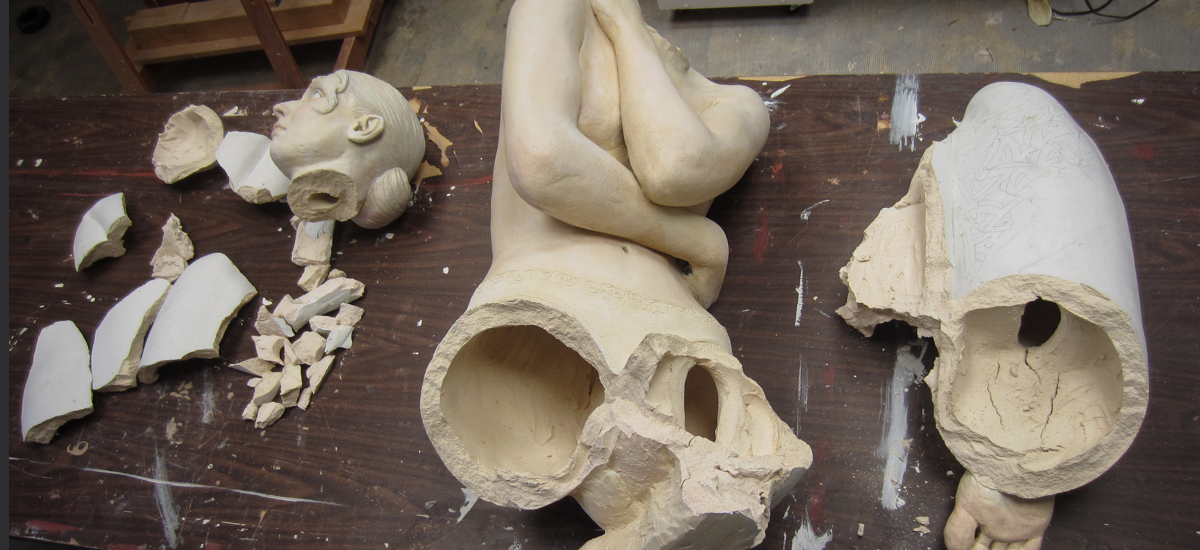

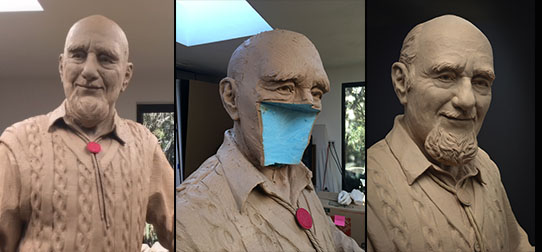
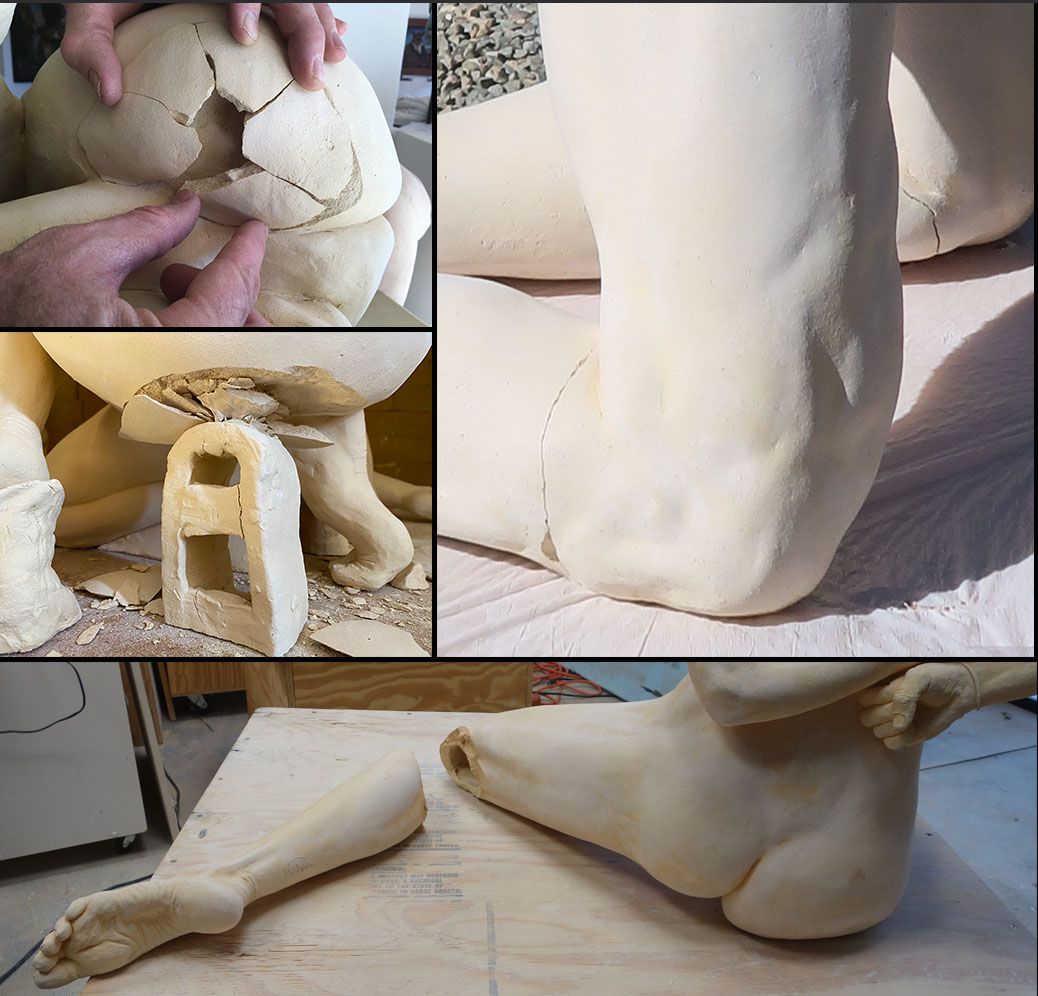
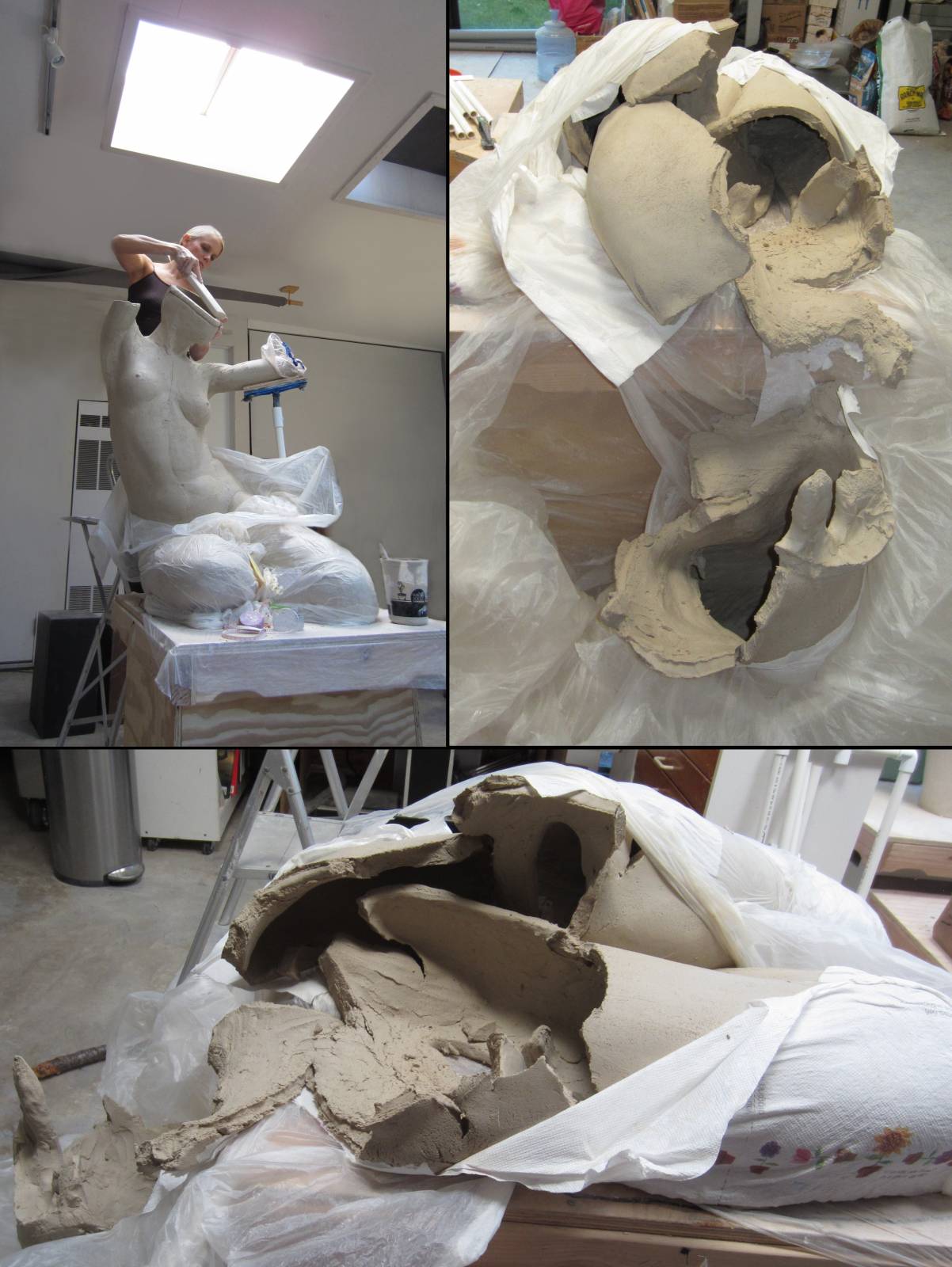
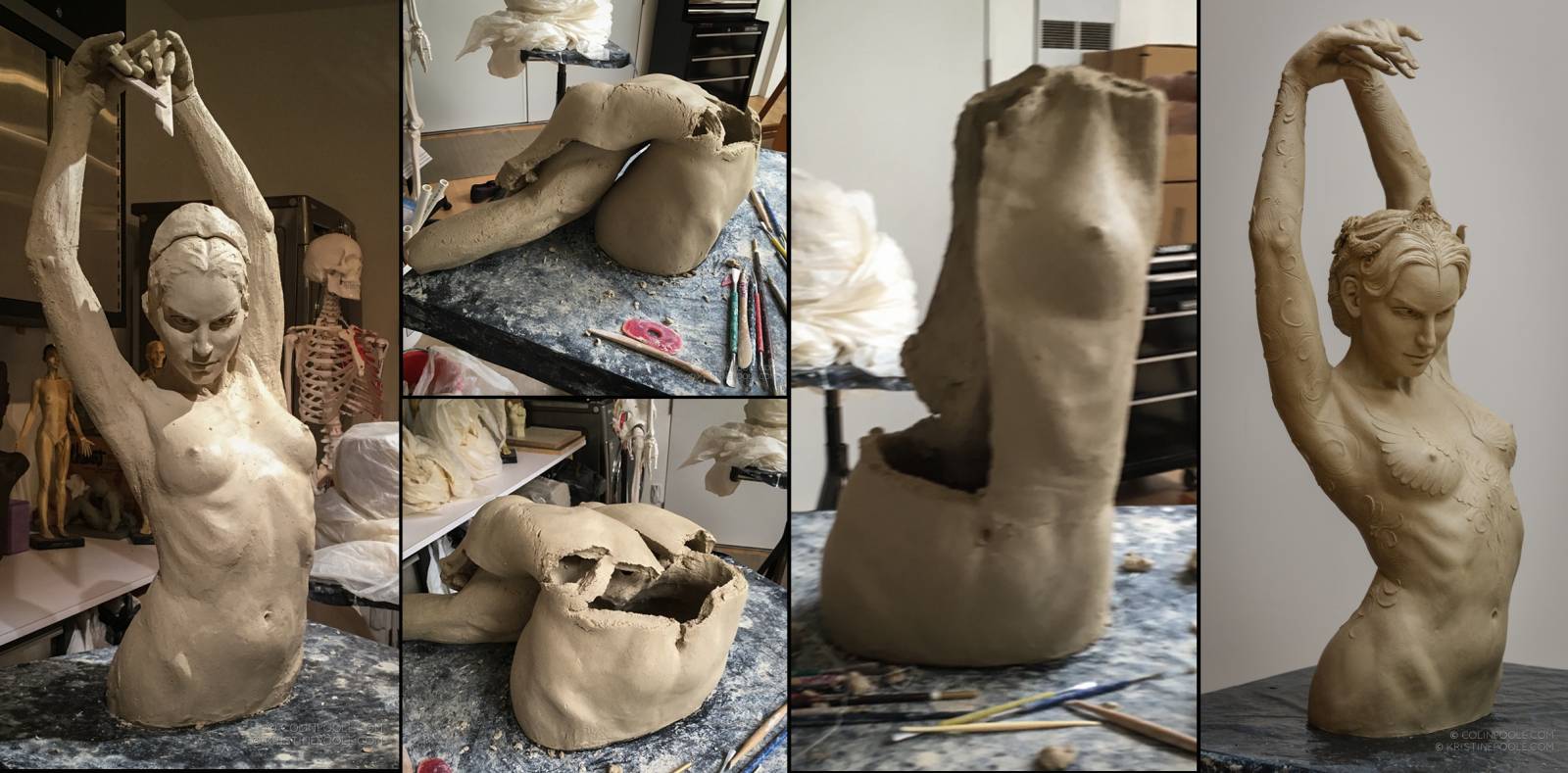
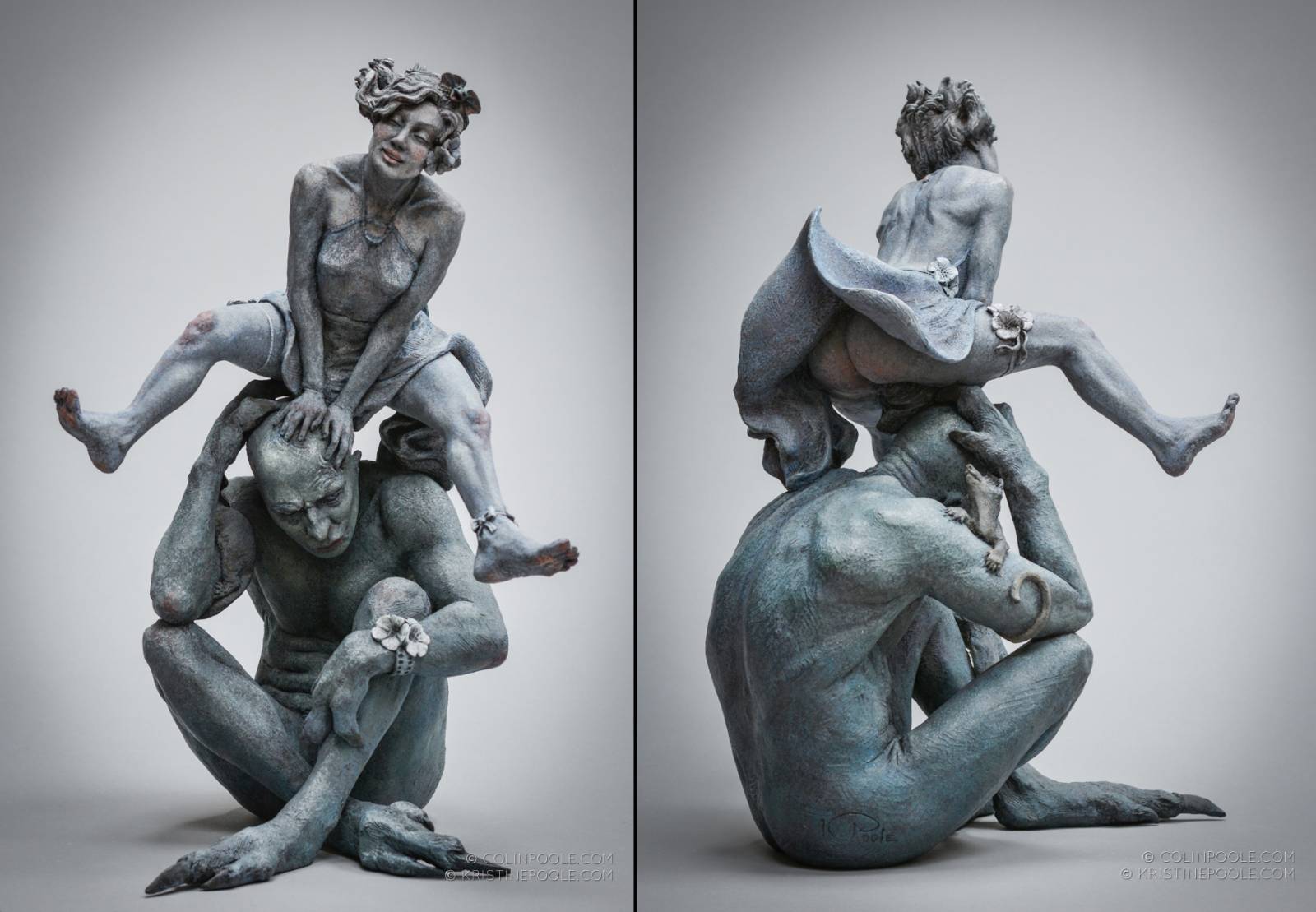
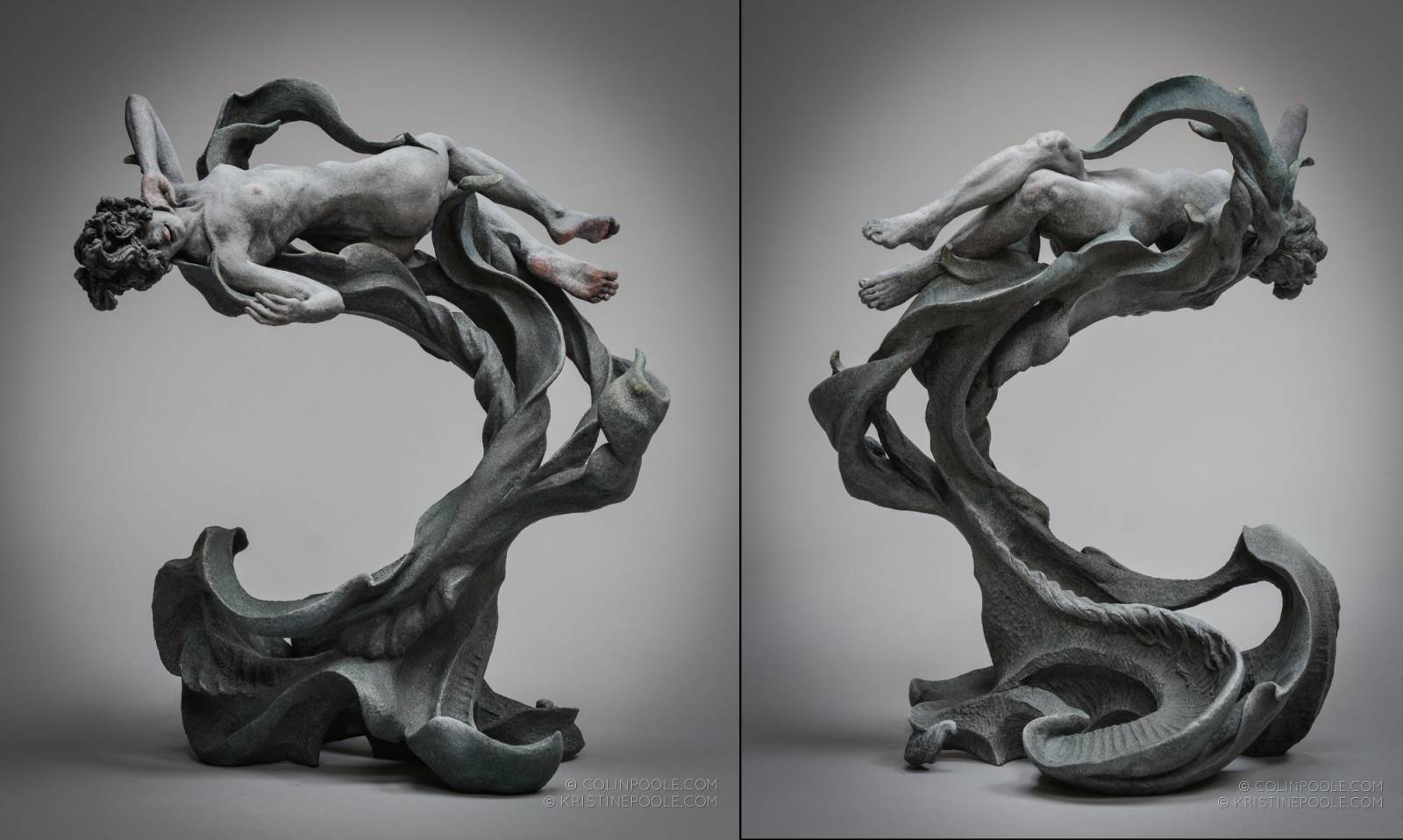

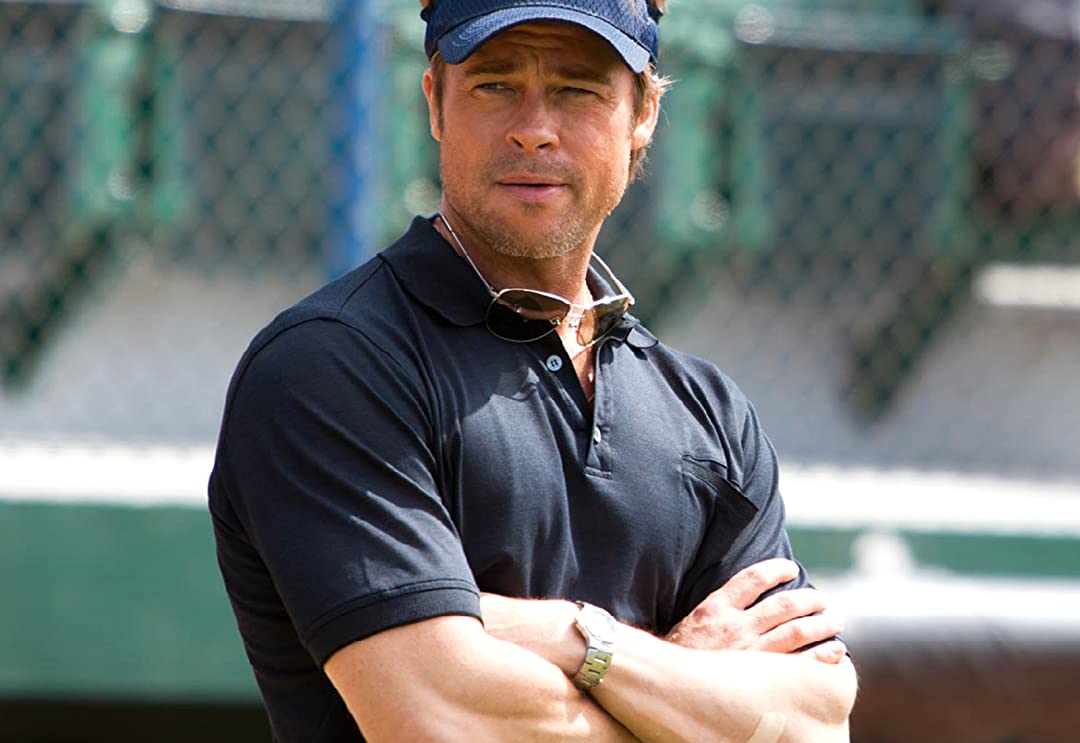
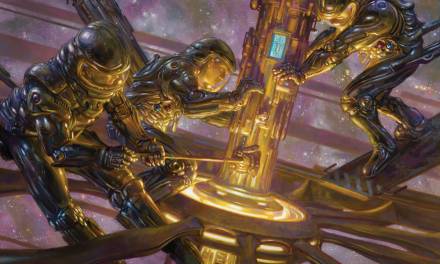

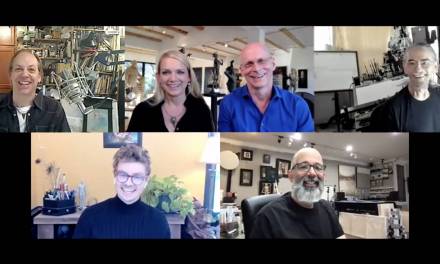
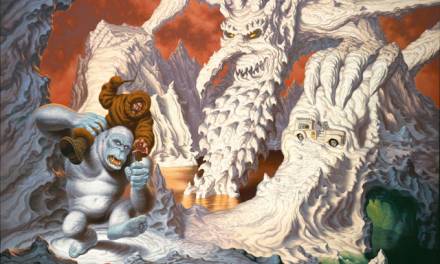

Really enjoyed that. Also great to see sculptor articles on Muddy Colors
Thanks Christof – it’s been such a pleasure being part of the Muddy Colors community and getting to share a bit of 3D. 🙂
I really enjoyed this. Very encouraging to just keep going because you can’t know where it’ll end.
I once did a portrait sculpture workshop where we poked holes with wire through the terracotta before doing the final finish. Never forgotten the tutor saying the technique freaked out potters but it’d always worked for her (and it did for my piece).
Thanks for taking a few moments to read and share your thoughts. You’re right that you have to just keep going. Every experience is valuable for the learning it provides. 🙂
I’ve heard of people doing the “poking holes all over a sculpture before firing” method, but haven’t ever tried it myself. Nice to hear directly that it worked for you.